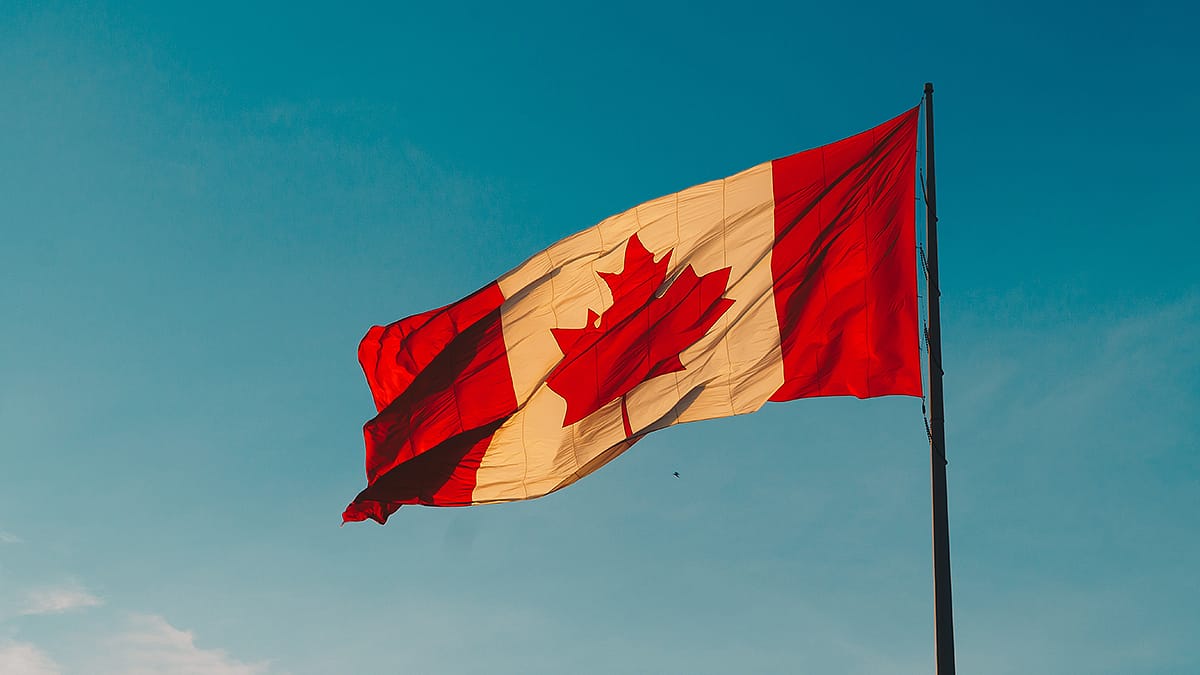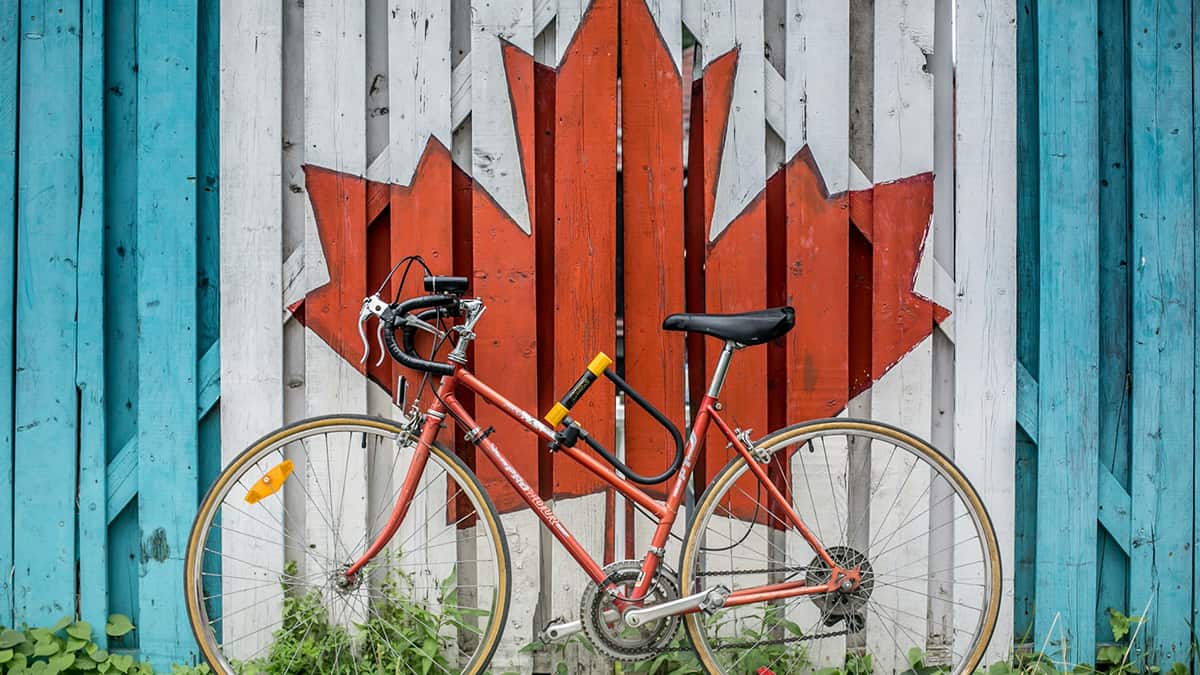6 Myths About Online Canadian Pharmacies
online pharmacy safety

One of the questions we hear most from potential customers is whether or not online pharmacies are safe. It’s a fair question coming from Americans who have been told to be skeptical about online pharmacies that aren’t located in the United States — it doesn’t offend our customer service representatives when they’re asked.
These conversations are oftentimes very eye-opening for the customer. Hopes run high when people are trying to access life-saving medication at a price that is affordable. And when they find out we have their exact medication at a lower price, it sometimes feels too good to be true.
That feeling is a reason we’re constantly busting myths about online Canadian pharmacies. While there are some illegal online pharmacies (in the United States, Canada and elsewhere in the world), there are those that are perfectly legitimate, dedicated to safety, and devoted to saving you money.
To help put your worried mind at ease, we thought we’d cover some of the most common myths we hear at NorthWestPharmacy.com. We’ll address each and then debunk them one-by-one.
A Deeply Controversial (and Uniquely American) Problem
When the topic of healthcare in the United States comes up in conversation, things can get heated quickly. There are a number of factors involved, but it’s safe to say that most people have very strong opinions and feelings regarding this topic.
Access to affordable healthcare and medication is fraught with controversy in the U.S. While citizens of other developed, financially stable countries typically believe that access to quality, affordable healthcare is a human right, there is still much controversy over this concept in this United States.
The reasons behind this major difference are complicated, and also a matter of opinion.
Employer-Sponsored Healthcare
Something that is very uniquely American (at least among developed countries) is the concept of tying health insurance to employment. In Canada, employers might offer supplemental plans to cover expenses not fully covered by the government-supplied program, but that’s not the same thing that the Americans are dealing with.
Without getting too far into the complicated history of healthcare in the U.S., it’s safe to say that it was a system hodge-podged together on a as needed basis. During World War II, President Franklin D. Roosevelt signed the Stabilization Act of 1942, which (in part) instituted a national pay freeze.
The purpose of the Stabilization Act was to fight inflation, in addition to reallocating funds for the war effort. But an unintended consequence was that employers had a difficult time recruiting new employees without the promise of more money or even potential raises in the near future.
As a result, some employers began offering health insurance to entice new applicants. The system looked nothing like it does today, and there weren’t nearly as many insurance companies. Blue Cross and Blue Shield was even a non-profit (not that there are any insurance companies that can claim such a status today).
From there, competition and capitalism sort of took over. Despite a global recession and pandemic — during which millions of people lost their jobs, and therefore their health insurance — the United States has still not managed to find a way to fix this.
In 2010, President Barack Obama signed the Patient Protection and Affordable Care Act (ACA, also known as Obamacare), which intended to provide more affordable healthcare to Americans by providing subsidies to people under certain income thresholds. It also established an online marketplace where individuals could go to purchase insurance coverage.
While the law was very controversial, there were two provisions that have been overwhelmingly popular. The first allowed young adults to stay on their parents’ health insurance plans until age 26 (previously, it was age 22, or when they graduated from college). The second disallowed insurance companies from denying coverage due to pre-existing conditions.
Overall, this expanded health insurance access to millions of people. How affordable the insurance was… well, that part remains questionable.

How Americans Are Trying to Reduce Medical Expenses
Obviously, healthcare in the United States is a hot-button issue. Arguments break out almost immediately, as the discussion turns political quickly. But even when people are on opposite sides of the ideological spectrum, there is one thing they can (almost) always agree on — that the cost of healthcare in America is absurdly high.
The United States spends literally trillions of dollars on healthcare annually at this point — far more than most industrialized nations. Between the cost of health insurance premiums (if they can afford health insurance at all), the out-of-pocket expenses the insurance company expects them to pay, and prescription costs, Americans are doing anything they can to reduce existing expenses and avoid new ones.
Unfortunately, in some cases, this means not seeking medical attention when necessary. And if you don’t have a primary care physician (because you don’t have insurance, or because yours left the network and it takes time to get into a new one), the only place you can go is urgent care or the emergency room. Of course, the latter two of those options are more expensive than the former.
Dire Circumstances
Millions of Americans are just one illness or medical emergency away from possible bankruptcy and financial ruin. According to a Bankrate survey, about 60% of Americans wouldn’t have savings high enough to cover an unexpected expense, such as a car or home repair.
The general rule of thumb is to have about $1,000 in a bank account to cover emergency expenses, but most medical emergencies will cost way more than that.
At this point, 137 million Americans are struggling under the crushing weight of medical debt. Medical expenses are among the top reasons as to why someone would consider withdrawing money from their retirement accounts early. Additionally, medical debt has become the number one reason Americans file bankruptcy.
There are some who argue that those who are wealthy won’t really have to worry about the cost of their medical care and that they’ll always have access to good health insurance and providers. That’s debatable but one thing is for sure though, it’s the middle and lower classes that are likely to suffer more.
International Online Pharmacies
While health insurance premiums are a major issue for many people, another major hurdle — even after they’re enrolled in an insurance plan — is the cost of their prescription drugs. If you go to your local pharmacy and one month of your medication is $500.00 or possibly much more, how are you supposed to cover that cost? Even if you could pay it this month, how will you pay it next month?
In the worst cases, Americans are actually dying because they can’t afford the inflated prices of lifesaving medications. However, even the most basic and commonly prescribed medications, like statins, antidepressants, or EpiPens, have doubled or tripled in price in recent years. In some cases, these price increases have ensured that lifesaving medication is out of reach for the average American individual or family — even with health insurance.
Knowing this information, it shouldn’t be surprising that more and more Americans are looking for alternatives to the profit-driven pharmaceutical industry in the United States to get the medications they need. While some Americans have the means and circumstances to cross the border into Canada to shop for their medications in person, shopping for prescription medication online at a reputable Canadian pharmacy is a much better option for most Americans.
Online Canadian pharmacies are an easy and accessible option for American consumers. However, pharmaceutical companies and the chain drugstore lobby in the United States (and even other more official entities) have been spreading misinformation for many years in order to prevent people from shopping outside the U.S.
There’s a certain amount of due diligence involved when choosing any pharmacy, whether it's in the United States, Canada or abroad. You need to ensure that you’re getting the medication you need in the correct dose. Especially since many American chain pharmacies are renowned for doing a terrible job when it comes to providing quality patient care. Some have even been accused of hiding proof of the poor care they are alleged to provide
This makes it extra-important to separate fact from the fiction purveyed by Big Pharma when it comes to shopping for prescription medications from pharmacies in Canada, which can be a perfectly safe and affordable alternative for many American citizens.

The Most Common Myths about Online Canadian Pharmacies
If you're considering buying prescription medications from a Canadian pharmacy in order to save money, you're not alone. Prescription drug and medication prices are completely out of control in the United States. Why pay more when there are legitimate Canadian pharmacies that offer safe and affordable products to American consumers?
Here are some of the most common and prevalent myths about getting affordable prescriptions from online international pharmacies.
MYTH 1: Online Canadian Pharmacies Aren’t Safe
Buying anything on the internet involves a certain degree of risk. Whether you're shopping for a new computer or even a pair of sneakers on Amazon or an unknown e-commerce site, there’s always a possibility that the product, manufacturer, or vendor is misrepresenting their business and their product (whether intentionally or unintentionally).
There’s always the possibility that you won’t get the item you ordered, or that it won’t look the way you thought it would, or that it’s simply not what you were hoping to buy.
The stakes are obviously much higher when it comes to shopping for prescription drugs on the internet, and you should never buy anything — especially your medication — from a vendor or website that you haven't verified and feel 100% confident is safe to use.
We’re happy to report that legitimate online Canadian pharmacies adhere to safety protocols and standards that are comparable to American pharmacies or higher.
In fact, studies have shown that American pharmacies are not automatically "safer" than pharmacies in Canada or Europe, and they can be prone to making errors. The New York Times reports:
Lynne Calloway had been taking a newly refilled arthritis prescription for a few days when she mentioned she wasn't feeling well. So her husband, Joseph Calloway, did some investigating. When he looked up her medication in a book detailing prescription drugs, he said, he discovered that she had been given the wrong one.
A CVS in New Jersey had mistakenly dispensed a chemotherapy drug, he said, that could be used to treat arthritis, but only when taken at limited frequencies — commonly a single dose a week.
Mrs. Calloway had been taking her medication twice a day. Pharmacy errors come in various forms, and many pharmacists at retail chains across the country are increasingly worried about making mistakes, an investigation by The New York Times found. They say they are juggling too many tasks without enough help. One pharmacist acknowledged making 10 to 12 errors a year — "that are caught" — in an anonymous letter to the South Carolina Board of Pharmacy.
It’s fair to say that everyone makes mistakes but staffing issues at American pharmacies (as implied in that final paragraph) could lead to catastrophic events. Regardless of where you purchase your medication, be sure to check the pill before taking it. It should look the same, even if the packaging or brand name is different. (Brands go by different names in different countries — but it’s still the same medication.)
Even believing that every pharmacist has the best of intentions (and with very few exceptions, we believe this to be true), it can be argued that the for-profit American healthcare system can sometimes put both pharmacists and consumers in dangerous situations.
The pressure to constantly increase corporate profits and meet endless shareholder demands combined with low staffing and busy pharmacies is a recipe for disaster. If they’re expected to answer phones, speak to customers, and fill prescriptions all at the same time, it could be argued that catastrophic mistakes and generally poor patient care and service will be inevitable.
In Canada, prescription drug prices are regulated, and the government has the power to negotiate directly with pharmaceutical companies to keep costs down and to protect consumers from price gouging. As a result, prescription medications are not treated nearly as much as commodities and pharmacists are not so incentivized to cut corners.
As too many Americans have tragically learned, a healthcare and pharmaceutical industry with significant influence over government and carte blanche to set pricing — regardless of the consequences — can result in exorbitant costs.
At NorthWestPharmacy.com, we take steps to protect our customers and help ensure prescription and drug safety and satisfaction in a number of ways:
- Certified by the Canadian International Pharmacy Association (CIPA) and the International Pharmacy Association of British Columbia (IPABC)
- small selection of carefully vetted and CIPA-certified suppliers
- Transparent fulfillment process
- Dedicated customer service team that is renowned for its exceptional service
- Norton Shopping Guarantee
We like to encourage current and prospective customers to consult with a NorthWestPharmacy.com pharmacist if they have questions about their medication. We believe that pharmacist counseling enhances patient safety and regimen adherence.
Developing a relationship with your pharmacist is one of the best ways to your health. Unlike at many chain drugstores you may be familiar with, our pharmacists will actually take the time to understand your health condition and your medication profile so that you can get the quality healthcare you deserve. There is no cost for consulting our pharmacists. It is completely free of charge.

MYTH 2: Online Pharmacies Have Poor Customer Service
Good customer service is the hallmark of a reputable and safe Canadian pharmacy. Before you place an order for medication online, make sure that you can contact the customer service center or pharmacy directly to discuss your needs before placing an order.
There are many disreputable companies and organizations on the internet selling dangerous or counterfeit products in North America and around the world, but a trustworthy and legitimate Canadian pharmacy will always prioritize high quality customer service.
At NorthWestPharmacy.com, we do everything in our power to make sure our customers are satisfied, including keeping hours in our call center seven days a week, reachable via a toll-free number. That's why we have collected over 475,000 reviews and earned a five star rating.
MYTH 3: You Won’t Know Where Your Medications Come From
Canada has very stringent safety protocols and requirements in place to protect Canadian citizens from dangerous or ineffective medications, and that extends to our American customers for the Canadian drugs we source for them. Drugs sourced from other countries and supplied by NorthWestPharmacy.com are also subject to significant vetting for authenticity.
The prescription medications sold in Canada and elsewhere are the same or very similar to the prescriptions sold in the United States in most cases, and many of the most commonly prescribed medications are manufactured by the same pharmaceutical companies for a global customer base.
The medication packaging may look different, but a simple Google search will show you that it goes by a different brand name in different countries. For example, the popular asthma and COPD medication Advair is known as Seretide in some countries — but it’s still functionally the exact same medication.
When you're buying your medications online from a trusted international and certified Canadian pharmacy, you're typically getting a product that has met safety and screening protocols that are comparable to those in the United States.
To further ensure your safety, every medication sold from NorthWestPharmacy.com is sourced from our trusted suppliers that have been certified by CIPA and meet all guidelines and standards that are required to maintain that certification.
MYTH 4: Canadian Pharmacies Aren’t Monitored
Safety and quality control go hand in hand, certified international and Canadian pharmacies are no exception. Despite the fear mongering that goes on and the propaganda surrounding medications from Canada and other countries, quality control throughout the supply chain is a given in the Canadian and other markets.
Reputable online Canadian pharmacies have at least one advisory organization to certify that they are using proper safety standards and following best practices. As we’ve already mentioned, the Canadian International Pharmacy Association (CIPA) is the main entity responsible for setting standards for these online pharmacies.
NorthWestPharmacy.com is proudly certified by CIPA, as well as the International Pharmacy Association of British Columbia (IPABC), which is specifically responsible for certifying online pharmacies that dispense from a licensed pharmacy based within the province of British Columbia.
In order to earn these two certifications, the online pharmacy must at a minimum:
- Require a valid prescription before dispensing medications
- Obtain demographic and medical information from the patient
- Maintain a medical history in their patient profiles complete with current and past prescriptions to avoid adverse drug interactions
- Have a licensed pharmacist on staff to supervise dispensing of medications and to be available for consultation upon patient request
- Have procedures to ensure patient privacy and confidentiality of personal records and contact information
Following both CIPA and IPABC requirements, we can assure you that NorthWestPharmacy.com is a safe and reliable online pharmacy, but we understand that taking our word for shouldn’t be enough. Please check out their websites and read our customer reviews before making your decision.
In Canada, where access to affordable medication is not treated as a profit-making industry to the extent it is in America, getting safe, high quality medications into the hands of consumers is the point. In general, many prescription drugs are cheaper in Canada and other countries due to government regulations that keep them affordable, not for lack of quality.

MYTH 5: You Get Lower Quality Generic Versions of Brand Name Drugs
One of the many factors that makes so many medications unaffordable in the United States is lack of access and availability to generic versions of popular brand name drugs.
It’s true that not every brand name drug has a generic alternative available. It’s also true that sometimes one version of a medication is more appropriate and effective than another, depending on the patient and their individual circumstances. However, profit and market factors also play a big role.
For example, many pharmaceutical companies are said to abuse the patent system in the United States to keep cheaper, generic versions of popular medications off the market for years — and sometimes decades. They also spend hundreds of millions of dollars on marketing and advertising campaigns designed to sell the American public on higher priced brand name drugs.
When you get a prescription, ask your doctor and pharmacist if a generic alternative is available and appropriate to help you save money. In the U.S., generics are usually the default at pharmacies because the insurance company wants it that way.
But when you shop at NorthWestPharmacy.com, your medications will be dispensed as prescribed and as selected by you. You will always know what you're buying and what you can expect.
MYTH 6: Lower Prices "Stifle" Innovation and Make it Harder to Develop New Drugs and Therapies
Of all the myths surrounding the price of prescription drugs and the justifications for astronomical drug prices in the United States, the “innovation” excuse is probably one of the most pervasive and misleading.
While it's true that pharmaceutical companies tend to spend a significant share of revenue on research and development costs, the average company only spends about 17% — far less than what they imply. According to industry data:
As of 2019, many of the largest pharmaceutical firms spend nearly 20% on R&D. Of the 20 largest R&D spending industries in the world, the pharmaceutical industry makes up nearly half the list. As of June 30, 2019, AstraZeneca (AZN) blazed the path by spending 25.63% of revenues on research and development.
Holding strong, Eli Lilly (LLY) spent 22.38% of its revenues on R&D as of March 31, 2019.
Roche Holding AG (RHHBY) wasn't far behind with 21.29% spent on R&D as of June 30, 2019.
Falling just below 20%, multinational biotechnology companies Biogen (BIIB) and Merck spent 15.41% as of June 30, 2019, and 19.70% as of March 31, 2019, respectively. Pfizer (PFE) and GlaxoSmithKline (GSK) are closer to the 15% level. On the lower end of the spectrum, Abbott Laboratories (ABT) dedicates about 7% of revenues to R&D spending as of June 30, 2019.
The truth is that many of the medications that have faced the steepest price hikes in recent years are medications that have been on the market for years, with little to no changes or improvements in some cases.
In fact, the pharmaceutical industry imposes automatic price hikes on hundreds of medications across the board in the United States every year.
Often, organizations that promote pharmaceutical and pharmacy interests in the United States argue that Americans shouldn’t be able to buy drugs from Canadian pharmacies, as it might have a domino effect on the price of drugs in the United States.
It’s unlikely that the cost of prescription drugs will get under control until the U.S. government decides to step in and given the lobbying effort to prevent this from happening, it’s probably going to be an uphill battle.
Learn More About Online Canadian Pharmacies
Making informed decisions about your healthcare and understanding your options is essential for your own and your family’s health and wellbeing. Our customer service representatives are dedicated to answering all of your questions and providing you with the transparency and information you need to find the best prices on your medications.
For more information, don’t hesitate to call our toll-free number 1-800-539-5330 or contact us online to get started. In the meantime, please check out the wealth of information we have on our website, from special feature articles to frequently asked questions to instructions on how to place an order.
We look forward to hearing from you soon.